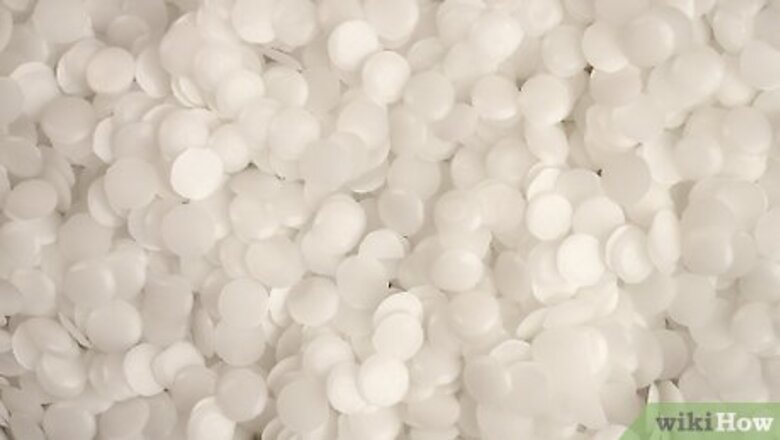
views
Breaking up Your Wax
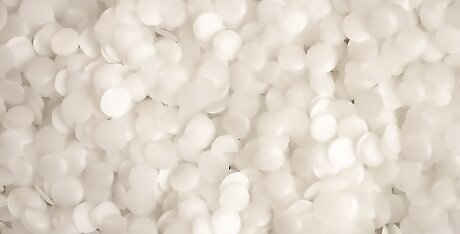
Purchase soy or beeswax for your candle wax. Soy waxes mix well with scents and colors and are often naturally composed from soybean oil, although some are mixed with the potentially toxic paraffin—always check the ingredients! Beeswax is completely natural, although it doesn't mix well with other fragrances. If you have leftover wax from old jar candles, use a spoon to dig out the wax and divide them up by scent. Paraffin waxes are classic candle-making waxes that easily mix with other scents and colors. However, they are petroleum byproducts, meaning they are potentially toxic—avoid using these waxes whenever possible.
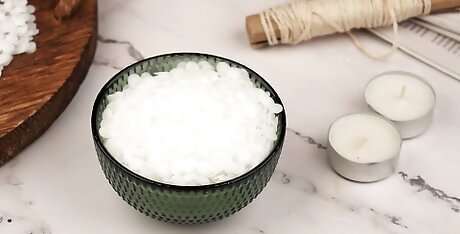
Break up your wax into a bowl if it's not in pellet form. If you have larger pieces of wax, take a small, sharp knife and cut your wax up into pieces. Each piece should be about 1 inch (2.5 cm) wide or less. If you're wax is in pellet form, you can skip this step.
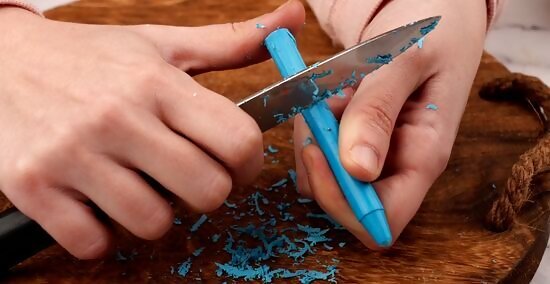
Chop up 3 ounces (85 g) of crayon wax for color. If you want to add some color to your wax, use a cheese grater, pencil sharpener, or knife to create some shavings—enough to fill a 3 ounce (85 g) mason jar should be fine. If you want, you can mix multiple colors.
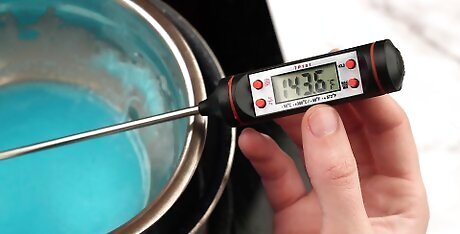
Find the flash and melting point of the wax you're using. Knowing the melting point of your wax before heating it will give you the best results. Never approach the flash point, as this is the temperature that the wax can combust if exposed to flame. Beeswax has a melting point range of 144 to 147 °F (62 to 64 °C) and a flash point of 400 °F (204 °C). Soy wax melts within the 120 to 180 °F (49 to 82 °C) range depending on the specific blend. Flash points are variable—check the label or supplier. Paraffin wax melts above 99 °F (37 °C) and has a flash point of 390.2 °F (199.0 °C) without additives and 480.2 °F (249.0 °C) with additives.
Heating Your Wax in a Double Boiler
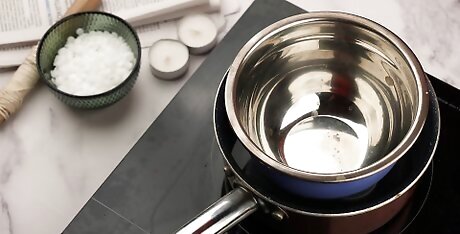
Create a double boiler to melt your wax. Place a large pot onto an element. Fill it up with about 2 inches (5.1 cm) of water. Afterwards, place a smaller pouring pot into the large pot with water. For safety, always use an electric stove—never gas.
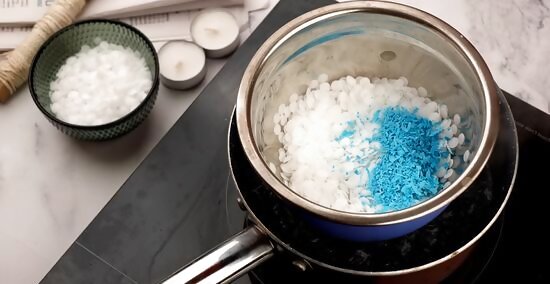
Put ⁄2 pound (230 g) of wax into your double boiler. This is the perfect amount to fill an 8 ounce (230 g) mason jar. If you're using colors, add your crayon shavings now.
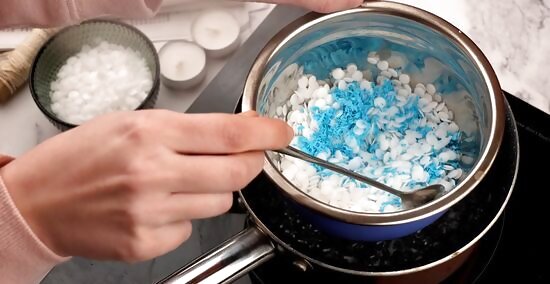
Heat your wax on 320 to 340 °F (160 to 171 °C) for 10 to 15 minutes. This is also known as medium-low heat, or 3 to 5 on a numerical element scale. Keep an eye on the temperature using a cooking thermometer and adjust the heat accordingly. Stir the wax using a wooden spoon every 1 minute or so. Break up any large chunks of wax with your spoon. If the water in the large pot begins to evaporate, add more as needed. If your wax exceeds 340 °F (171 °C), remove it from heat until it falls back within the proper range.
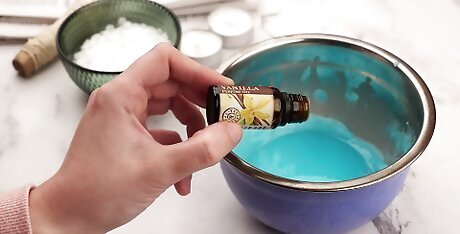
Add fragrances after your wax is melted. Gently pour the fragrance into your wax as it continues to heat. Stir it with your wooden spoon for approximately 30 seconds to distribute it evenly into your wax. If you purchased wax that is specifically designed for candles, they should have instructions for that amount of fragrances required per 1 pound (0.45 kg) of wax. If your fragrance isn't mixing properly, try increasing the temperature to 365 °F (185 °C). For general wax products, 1 ounce (28 g) for each 1 pound (0.45 kg) is a safe bet.
Heating Your Wax in a Microwave
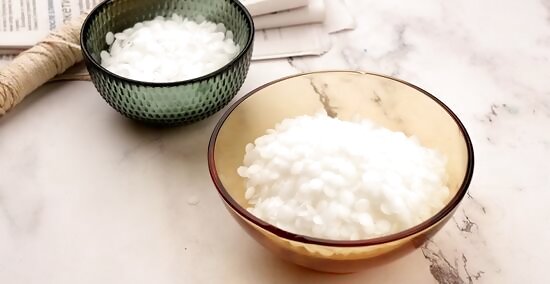
Put ⁄2 pound (230 g) of wax into a microwave-safe bowl. This will fill an 8 ounce (230 g) mason jar. If you're adding colors to your wax, pour in your crayon shavings. If you're using plastic, be sure to use containers that are marked as "microwave-safe." Ceramic and glass dishes are usually fine, but you should still check for "microwave-safe" or "heatproof" labels on their packaging.
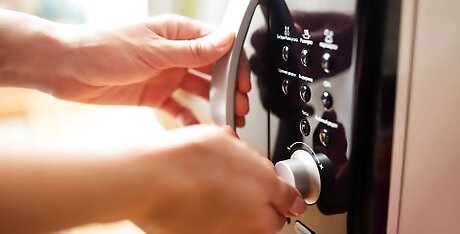
Heat your wax in the microwave for 3 to 4 minutes. After this time, take the wax out and stir it around with a spoon. Take the temperature and determine that it hasn't exceeded the melting or flash point. Continue heating your wax in 2-minute intervals until it's fully melted. Be sure to keep checking on your wax about every 30 seconds throughout the process.
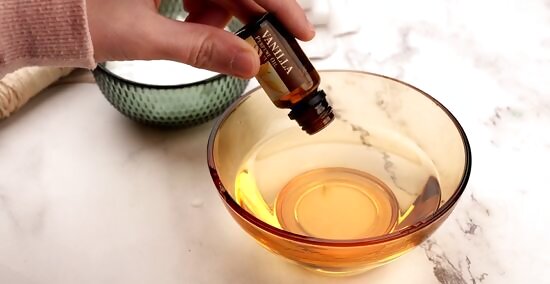
Add fragrances once your wax is fully melted. Remove the bowl of wax from the microwave and gently pour your fragrance into the melted wax. Stir it with a small spoon to create an even consistency and to blend the ingredients. Check fragrance instructions from your wax supplier prior to mixing it in. Most include instructions for the amount of fragrance required per 1 pound (0.45 kg) of wax, which is typically 1 ounce (28 g).
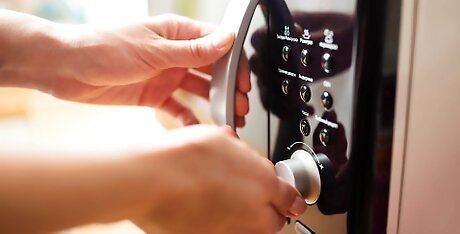
Reheat the wax for 2 minutes. After you add your desired fragrances and stir them in thoroughly, put the bowl of wax back into the microwave. Heat it for 2 more minutes so all of the ingredients meld together, then carefully remove the bowl of melted wax from the microwave and stir it one more time.
Pouring the Melted Wax
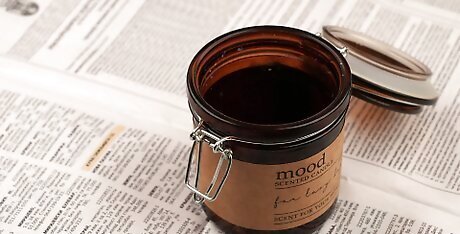
Lay down paper towels or newspaper on a flat surface. Melted wax droplets can be messy, so you need a nice work area. Be sure to have your containers, jars, and wicks ready and within reach—wax droplets can dry in 1 to 2 minutes.
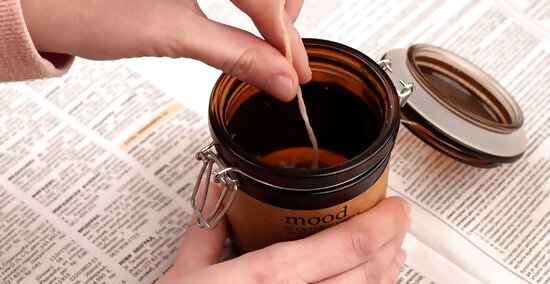
Stick the wick into your container. If your wick has a sticker attached to the bottom, use this to adhere it to the bottom of your candle container. If not, place a dab of super glue on the bottom and attach the wick's metal tab to it. Hold the wick upwards for 2 to 3 minutes to give the glue time to set and ensure it dries in the proper position. If you'd like, you can use your melted wax to adhere the wick to the container.
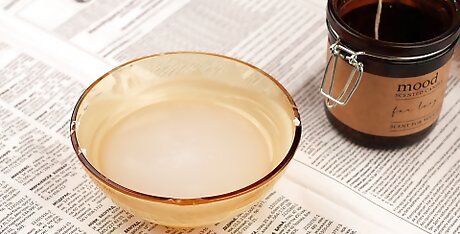
Take your wax mixture off the heat and cool to 266 to 284 °F (130 to 140 °C). This is the optimal temperature to pour the wax into a container. Place the small pot onto a flat surface and keep an eye on the thermometer. It should cool sufficiently in about 3 to 5 minutes.
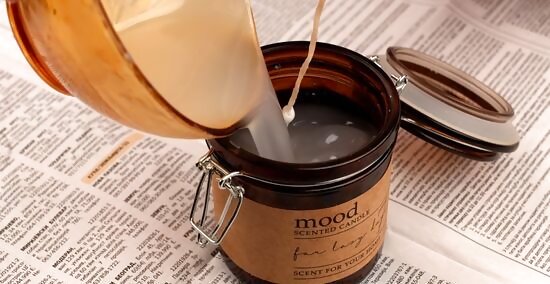
Pour the wax gently into the container while holding the wick. As you pour the pot, keep a firm hold on the wick so that it remains in the center of the container in an upright position. Leave a bit of wax in the pot for later. Don't pull on the wick too hard or you could break it from the container.
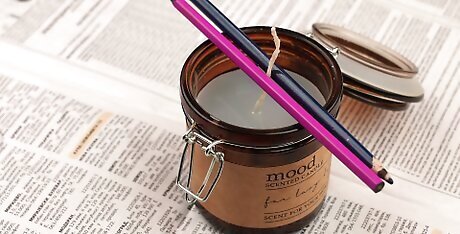
Secure the wick using a writing utensil if it's swaying. If your wick is swaying in the wax and not standing up straight, place two pencils horizontally on top of the container and secure the wick in between them. The wick doesn't have to be completely secured—just enough to stay in place while the wax sets. Be sure to secure your wick if it's off-center—letting it set in this position means it won't burn properly.
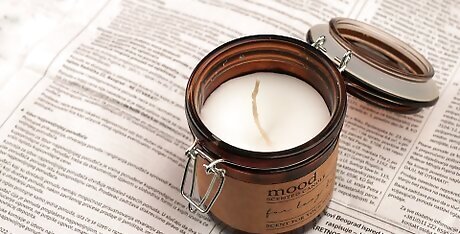
Wait for about 2 to 3 hours for the wax to set. As the wax begins to set, you will notice a sinkhole forming in the center. Once it has completely set, reheat the leftover wax and add some of it to the top of the candle—just enough to fill the sinkhole. Once the hole is filled, stop pouring the wax—too much will create another sinkhole. For the best wax setting, leave your candle out set overnight at room temperature.
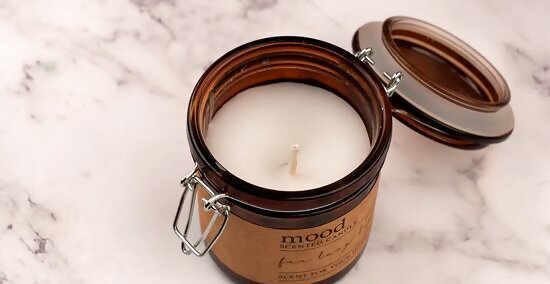
Trim your wick down to ⁄4 inch (0.64 cm). Keep your wick at a manageable length so that it doesn't burn too large of a flame. Hold the wick upright with your fingers and snip it down to size using a pair of scissors. If you light your wick and the flame is bigger than 1 inch (2.5 cm), your wick is too long.


















Comments
0 comment